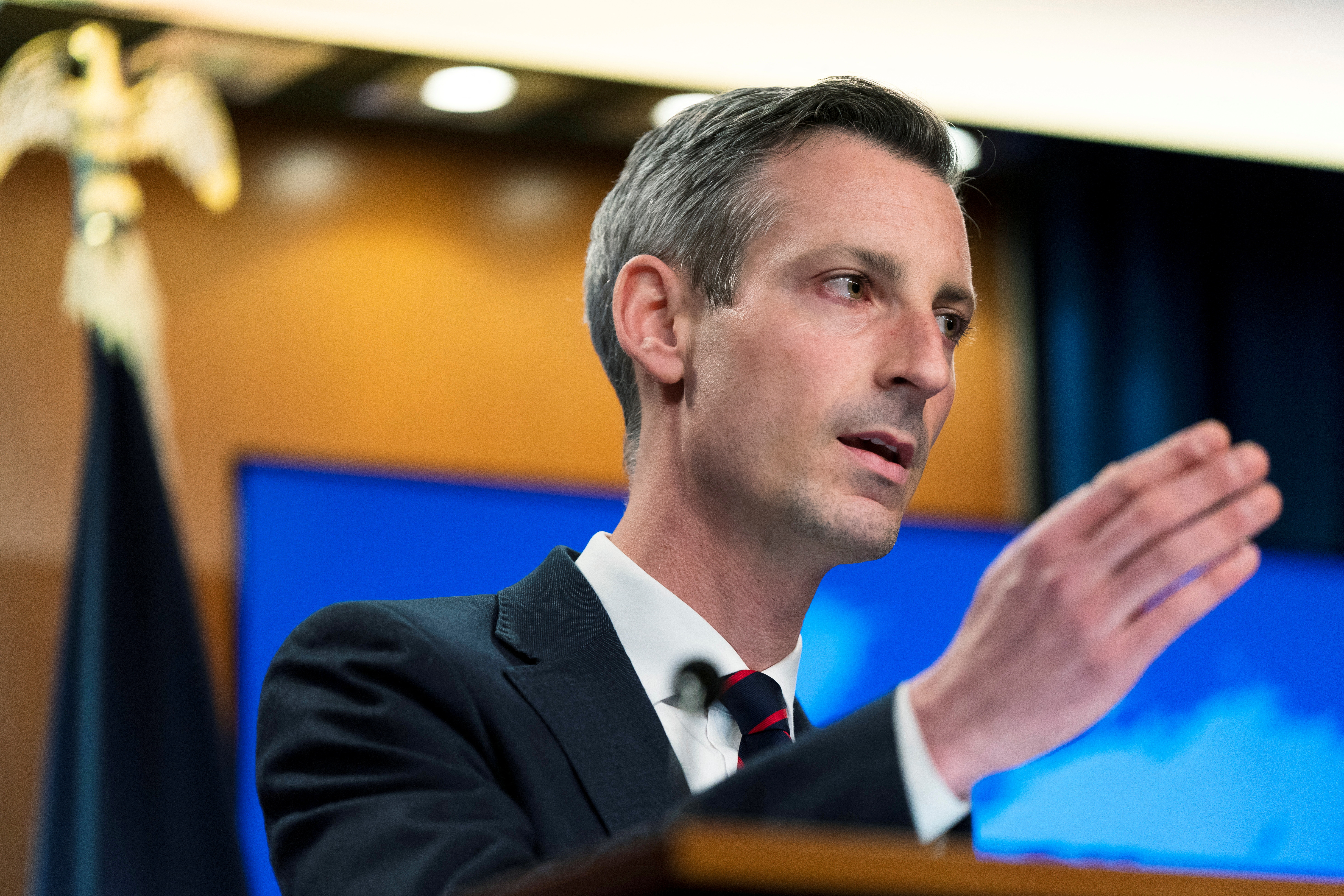Josh Eidelson
Thu, August 18, 2022

(Bloomberg) -- Starbucks Corp. has to offer reinstatement to seven fired pro-union employees in Memphis, Tennessee, and must not retaliate against employees who support union organizing, a federal judge ruled.
The firings appear to be illegal in light of evidence the company acted in a discriminatory manner, US District Judge Sheryl Lipman said in an order Thursday.
The decision is a victory for the US National Labor Relations Board, which has been confronting an alleged crackdown by Starbucks on a nationwide unionization push by its workers.
The union Starbucks Workers United has prevailed in elections this year at over 200 of the chain’s roughly 9,000 corporate-run US stores, which were all union-free until the labor group’s first victory last December. NLRB regional directors around the country have issued more than 20 pending complaints against the company.
Starbucks, which has denied wrongdoing, said it planned to appeal and would ask that the ruling be put on hold in the meantime. “Interest in a union does not exempt partners from following policies that are in place to protect partners, our customers and the communities we serve,” the company said in a statement.
The company has said that the Memphis employees weren’t punished for their involvement with the union or for talking to the media, but rather because they let off-duty staff and non-employees, including journalists, into their store when it was closed, and violated numerous safety rules.
The fired employees, who call themselves the “Memphis Seven,” are the most prominent among dozens of workers across the country who the union argues were fired for organizing. Since being terminated, the Memphis employees have taken part in protests in Tennessee and in Starbucks’ Seattle hometown, spoken at the South by Southwest festival, met with lawmakers, and worked to organize fellow baristas.
Read More: Howard Schultz Returns to an Unstoppable Union Wave at Starbucks
“We’re beyond thankful the federal court ruled in our favor, and this just goes to show that Starbucks will do everything in their power to silence us,” Nabretta Hardin, one of the fired pro-union employees in Memphis.
US labor law prohibits companies from retaliating against workers for taking collective action to improve their working conditions, including union organizing.
But the labor board, which prosecutes alleged violations of that law, has no authority to make companies pay punitive damages. Disputes over alleged retaliatory firings can drag on for years, hampering organizing efforts even if the employee eventually prevails.
NLRB regional offices investigate claims. If they find merit in the claims and can’t reach a settlement, the offices issue complaints which are then considered by agency judges.
The judges’ rulings can be appealed to NLRB members in Washington and from there to federal court. The NLRB’s top prosecutor, Joe Biden appointee Jennifer Abruzzo, has said she plans to “aggressively” seek federal court injunctions to get wrongly fired employees back to work more quickly.
Abruzzo, the agency’s general counsel, called Thursday’s ruling a “crucial step” in protecting employee rights.
“Starbucks, and other employers, should take note that the NLRB will continue to vigorously protect workers’ right to organize without interference from their employer,” she said in an emailed statement.
In a June filing, Starbucks argued there was no need for an injunction because the evidence showed the firings had not actually hurt the union organizing efforts. Instead, the company wrote, “the discharges emboldened union organizing activities in Memphis and throughout the nation.”
Josh Eidelson
Wed, August 17, 2022

(Bloomberg) -- Starbucks Corp. illegally threatened employees in cities including its Seattle hometown, US labor-board prosecutors alleged in a Tuesday complaint.
A National Labor Relations Board regional director claims that letters issued by the company to staff at 10 stores in Washington state and Oregon violated federal law. Employees were told that when workers unionize, “negotiations can often take more than a year -- if a contract is reached at all,” and that in the meantime “benefits and wages will essentially be frozen,” according to the complaint.
By issuing that message, the company “has been interfering with, restraining, and coercing employees in the exercise of the rights” guaranteed by labor law, the regional director wrote.
Starbucks denied wrongdoing. “We want our partners to be informed and have all the facts when making their decision and have followed NLRB rules to ensure they have what they need to make the best decision for themselves,” spokesperson Reggie Borges said in an email. “Claims of anti-union activity are categorically false.”
NLRB regional directors around the country have issued more than 20 complaints against Starbucks on behalf of the agency’s general counsel. In another Tuesday filing, the labor board’s Chicago regional director accused the company of violating the law by prohibiting pro-union face masks and T-shirts, interrogating staff, telling employees unionization would be futile, and threatening them with the loss of raises and benefits if they organized.
Potential Appeals
Absent a settlement, such complaints are heard by agency judges, whose rulings can be appealed to labor-board members in Washington, D.C., and from there into federal court. The agency has the authority to order changes to company policies, but not to make employers pay punitive damages for violations.
“The NLRB may have issued this complaint in Seattle, but workers across the country have been getting similar letters from Starbucks,” Arizona Starbucks employee Michelle Hejduk said in an emailed statement from the union, Starbucks Workers United. “This complaint just scratches the surface of the threats Starbucks has made to workers in their anti-union leaflets nationwide.”
Freezing benefits during contract talks has been a flashpoint in the nationwide struggle between the company and the union, which has prevailed this year in elections at over 200 of the chain’s roughly 9,000 corporate-run US cafes.
In May, Starbucks announced a suite of new raises and benefits taking effect this month, but said those improvements wouldn’t apply to sites that unionized. The union has argued that withholding the new perks is an intimidation tactic.
On its website, the company says, “The law is clear: once a store unionizes, no changes to benefits are allowed without good faith collective bargaining.”
Daniela Sirtori-Cortina
Thu, 18 August 2022

(Bloomberg) -- Starbucks Corp. Chief Operating Officer John Culver will leave the company as the coffee chain undergoes a broader leadership overhaul.
Culver will step down from his current role on Oct. 3 and serve as an executive adviser before departing the company at the end of 2022. Starbucks will eliminate the COO role, with day-to-day business operations now reporting to the chief executive officer. Frank Britt, chief strategy and transformation officer, will oversee some additional functions.
“Our reinvention requires us to rethink our leadership structure to create every opportunity for our new CEO and, most importantly, to accelerate delivery of modernized and elevated experiences,” CEO Howard Schultz said in a letter to employees about Culver’s departure.
In a separate letter, Culver said that George Dowdie, Starbucks’s global supply-chain chief, also plans to leave the company.
Schultz returned to Starbucks as interim CEO this year after the departure of predecessor Kevin Johnson in April. He has moved quickly to put his stamp on the company in his third stint at the helm, even as Starbucks seeks a new permanent CEO whom it plans to name in the fall. He dismissed former General Counsel Rachel Gonzalez and blasted past management for “false promises” in an April message to employees.
CNBC earlier reported the COO news.








